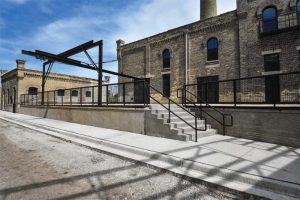
by Ryan Schmidt
Adaptive reuse is a process of retrofitting old buildings for new uses, which allows structures to retain their historic integrity while providing for occupants’ modern needs. These projects preserve what is best about historic properties, but develop them in a way that is modern and usable, and infuse new life into historic buildings, which can create new beacons in communities. Historic buildings embody a vast array of crafts and artistic skill that is no longer used in modern construction.
In saving these places by repurposing them, developers can provide a strong sense of culture. The more buildings remain that have a story, the more areas can stay connected to the past while using its interiors for an increased modern purpose.
Older buildings often showcase aesthetics modern buildings simply cannot afford because they were built when skilled labor was more affordable. Architectural elements from these historic buildings include sculpted stone, columns and capitals, elaborate masonry, vaulted ceilings, and carved wood—all of which can be prohibitively expensive today.
Federal tax incentive program
For adaptive reuse projects involving historic buildings, developers often tap into a federal tax incentive program known as the historic rehabilitation tax credit. This program generates a credit that directly reduces taxes rather than offering a tax deduction such as depreciation, which reduces taxable income. The program encourages private sector investment in the rehabilitation and re-use of historic buildings. It creates jobs and is one of the nation’s most successful and cost-effective community revitalization programs. The National Park Service (NPS) and the Internal Revenue Administration (IRA) administer the program in partnership with state historic preservation offices and approximately 1000 projects are certified every year.
Each project typically is required to undergo a three-part process. First, the NPS determines if a building qualifies for the credit. Second, it approves rehabilitation plans and specifications that comply with the architectural standards. Building owners and contractors must follow strict guidelines for the rehabilitation, set forth by the Secretary of the Interior. Finally, it determines if the completed rehabilitation accurately maintains the building’s history. It is the second part in this three-part process that may be the most challenging, particularly for the general contractor because the attention to detail is imperative.
Specific to historic structures, the Secretary of the Interior has published Standards for Rehabilitation. These 10 standards pertain to historic buildings of all types and apply to the interior, exterior, and surrounding environment. The standards must be strictly followed to apply for federal tax credits.




